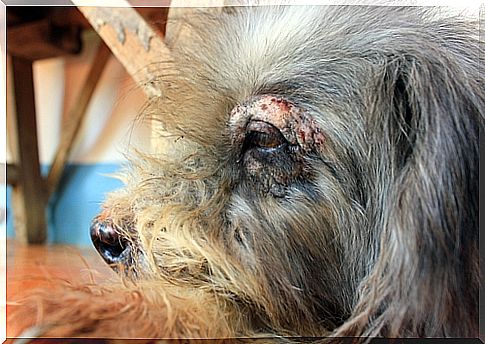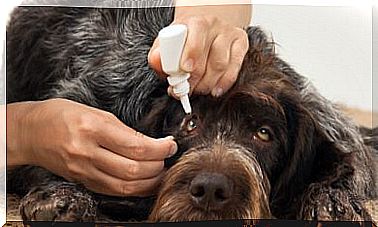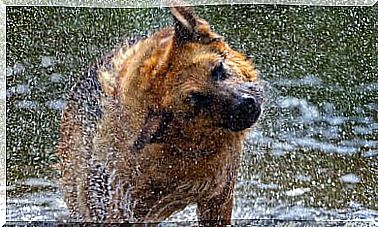Canine Atopic Dermatitis: Treatments For Your Pet’s Skin

Does your dog scratch a lot in the sensitive areas of the skin? Do you have reddened areas, peeling and irritations of the skin? Are those areas inflamed? Does your dog have a family history of atopic dermatitis? So your dog likely has canine atopic dermatitis. Here you will find out more about this disease and the ways to treat it.
What is canine atopic dermatitis?
Canine atopic dermatitis is an inflammatory skin disease that presents enemas and peeling and is caused by an alteration of the immune system. To be clear, it is a type of allergy. It manifests as an alteration of the skin that can allow the passage of allergens and the colonization and proliferation of microorganisms and inflammatory disorders.
Canine atopic dermatitis is genetically conditioned, which means that it depends on the genes of the animal and its family history and therefore it is not a disease that can be cured. Yes, it can be treated to reduce symptoms and external manifestations, but the treatment will be for life.
It mainly appears in young dogs and there are breeds that have a predisposition to this disease. West Highland White Terrier, Boxer, Labrador, Dalmatian, Setter, German Shepherd, Shar Pei and French Bulldog breeds are especially sensitive to this disease.
How do I recognize it in my dog?

Canine atopic dermatitis is recognized above all because the sensitive areas of the skin (especially the face, the inner area of the ears, the neck, the armpits, the groin, the abdomen, the perineum, the lower area of the tail, flexion areas of the extremities and between the toes) are reddened and with pimples.
These areas can also present flaking and irritation and if the dog scratches the skin it will be hardened, blackish and the dog will begin to lose its hair in those areas.
If it also occurs around the eyes or in the ears, the disease can cause conjunctivitis or otitis in the animal. That is why you have to be especially careful when canine atopic dermatitis occurs in these areas and apply the treatment with the regularity prescribed by the veterinarian.
How do I stop my dog from being disturbed?

Canine atopic dermatitis is only treated if it becomes a problem for the dog; that is, if you scratch a lot and have bald spots on your hair or you get wounds.
Before performing any of the possible treatments for atopic dermatitis, the dog should receive certain care. All atopic dogs must undergo flea control and receive skin care, including the elimination of infections. The owner of the dog must be willing to collaborate with the veterinarian at all times and bear in mind that the treatment does not eliminate the disease, but only reduces the itching sensation and prevents clinical manifestations.
There are three types of treatments that can be applied to a dog with atopic dermatitis: topical treatment, immunotherapy and anti-itch (that is, anti-itch) medical treatment.
Topical treatment normally consists of the application of gels, lotions or creams that help to restore the epidermis (because they contain factors that regenerate the skin barrier). In this way, itching is avoided, the skin is hydrated and the allergy that the dog may have through the skin is reduced.
Immunotherapy consists of the active reinforcement of antibodies and the immune system of the dog. It can be applied in two ways: in an allergen-specific way (also known as an allergy vaccine), which is aimed at specifically boosting the antibodies that affect whatever the dog is allergic to, or it can be applied by interferons that modulate the response. immune.
This last form of treatment is aimed at treating the causes of the disease, but it does not always manifest itself clinically.
The third method of treatment is medical treatment for itching. This treatment controls the clinical signs of the disease; that is, flaking, redness, pimples, itching … It does not cure the disease, because being genetic it is incurable, but makes it tolerable for the animal. This treatment has a variant for acute episodes and a chronic treatment to prevent the onset of symptoms in the long term. It can involve the administration of drugs such as glucocorticoids, cyclosporine, or fatty acids.
Unfortunately, canine atopic dermatitis is a genetic disease and there is no single therapy that is completely effective. The appropriate treatment is determined according to an in-depth study of each case. Remember that even if the disease cannot be cured, preventing your dog from noticing symptoms will make him healthier, calmer, and happier.








